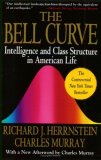 Claire's Original Art Greeting Cards
There is nothing that says I care like a real snail-mail greeting card!
Click on a picture above for a plain-paper printable greeting card pdf.
Print on regular 8.5 by 11 printer paper. Fold twice so that the art is on the front and the title and copyright are on the back.
Write your greeting on the inside.
Mail in an A2 Invitation Envelope.
Claire's Original Art Greeting Cards
There is nothing that says I care like a real snail-mail greeting card!
Click on a picture above for a plain-paper printable greeting card pdf.
Print on regular 8.5 by 11 printer paper. Fold twice so that the art is on the front and the title and copyright are on the back.
Write your greeting on the inside.
Mail in an A2 Invitation Envelope.None of the Above: Malcolm Gladwell Writes on Intelligence
December 29th, 2007 · No Comments

Malcolm Gladwell’s article “None of the Above,” in the December 17, 2007 issue of the New Yorker is worth a read.
“None of the Above” seems to be a rebuttal of the 1994 tome The Bell Curve: Intelligence and Class Structure in American Life by Richard Herrnstein and Charles Murray. The Bell Curve, widely maligned and wildly misinterpreted, is a basically a meta study—a review of a lot of other peoples’ analyzes of intelligence.
Gladwell, staff writer for The New Yorker and author of Blink : The Power of Thinking without Thinking, might not be quite as qualified on this subject as Daniel Goleman, psychologist and author of Emotional Intelligence: Why it can matter more than IQ.
Nevertheless, Gladwell gives us something to think about.
Gladwell comes up his own answer to a much studied conundrum, the Flynn Effect, which is the tendency for test scores to rise over time. Gladwell points out that we are becoming more modern, by which he seems to mean we can afford to be more abstract in our thinking since reality doesn’t get in the way much anymore. (He takes the reader through a hypothetical grouping question which requires one to choose between grouping by what things are, e.g., food versus tools, or by how one would use them, e.g., the potatoe goes with the knife because you need the knife to cut up the potato so you can eat it.)
Indeed, the Flynn Effect may have something to do with practicing to take the test, with schools, increasingly homogenized, teaching students to look at problems with the same logic as that used by the IQ test developers.
Test makers try to reduce bias with such exercises as having their subjects repeat sequences of numbers forwards and backwards. (I remember these number sequences. The teacher would flash them on a screen and we’d write them down.) This is something you’d get good at with practice, like any game.
Gladwell misinterpreted The Bell Curve on a point of social policy for which the New Yorker printed a retraction in its December 24/31 issue. It surrounds Herrnstein and Murray’s conclusion that there is a growing gap between a “cognitive elite” and an unintelligent “underclass.” (This basically amounts to rich and poor neighborhoods but leaves small-town America intact.)
They also conclude that it’s better to be born smart than rich. Why? Because if you do well IQ wise, you can go further in school and pass the hurdles for a better job. (This assumes you’re not going to inherit buckets of cash.)
Their work is not devoid of social policy learnings. Herrnstein and Murray inform the reader that the average intelligence of unemployed people in the United States is more than one standard deviation below the average of all people, therefore, to be successful, programs for the unemployed should take that under consideration. I take this to mean that we might, for example, train unemployed for jobs using computers as opposed to programming them.
Gladwell seems to think the brain is completely malleable and, with the proper environment, any can be as fast and big and agile as another. This is a point on which The Bell Curve is widely misinterpreted. Herrnstein and Murray do not say that IQ is primarily inherited. In fact they write
Even the highest estimates of heritability leave 20 to 30 percent of cognitive ability to be shaped by the environment. Some researchers continue to argue that the right proportion is 50 to 60 percent. In either case, eliminating the disadvantages that afflict people in poor surroundings should increase their cognitive functioning. (page 390)
Actually I find that Herrnstein and Murray unwittingly make a case for IQ being inherited from the mother, although, they being men, wouldn’t, in this case, recognize their own findings. Where the offspring of single mothers have IQ’s similar to the mothers, they attribute it to environment. This might be why they haven’t much to say about the German Allied Occupation study. Elsewhere they make a case for heredity by explaining statistical correlation and controlling studies for socio-economic factors.
Goleman tells us that the best predictor of how a school-age kid will do on an IQ test is her impulse control as a preschooler. (Mine? Not good, at least as a second grader.)
Being impulsive and emotionally unintelligent, I’ll put my money on Gladwell’s 100% malleability. I want to be an astrophysicist.
Tags: Emotional Freedom · Non Fiction · Social Psychology







0 responses so far ↓
There are no comments yet...Kick things off by filling out the form below.
Leave a Comment